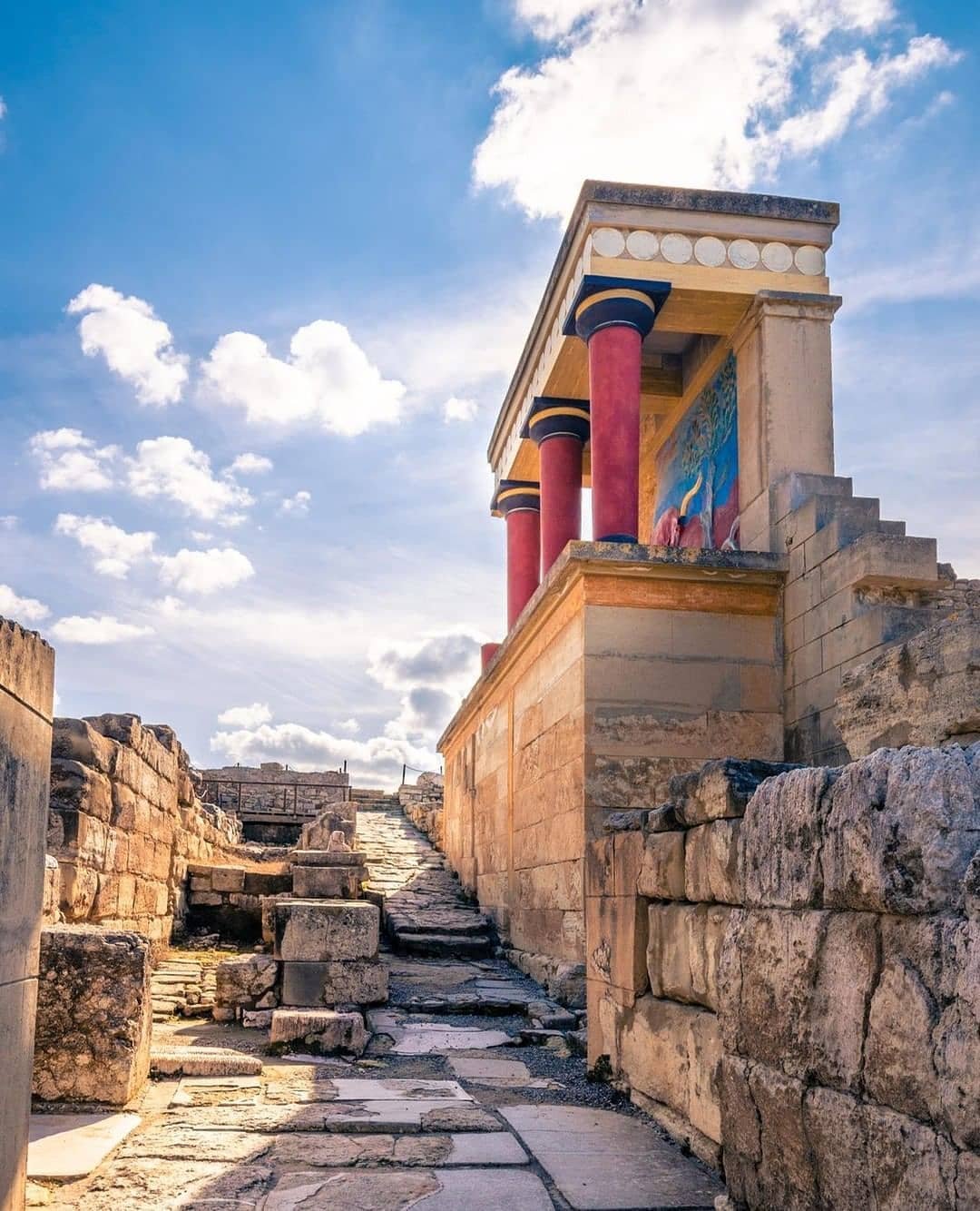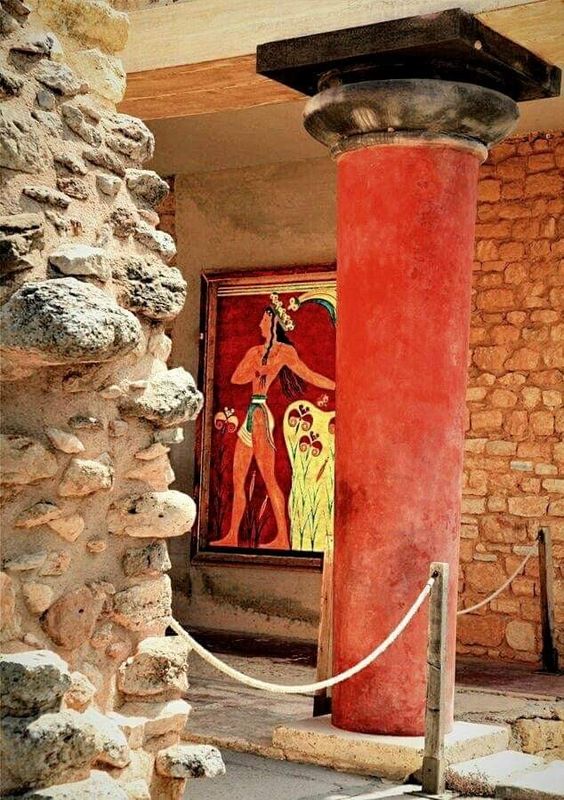This is Knossos; in case you didn’t know so
IASON ROUVAS is currently peeping into what makes Minoan art so unique — here we go. We’ve just touched down on the island of Crete. Heading over to Knossos Palace, near Heraklion (the capital), this spot was the heart of Minoan Crete's long civilization almost 4,000 years ago, and where Theseus took down the legendary Minotaur in King Minos’ wild labyrinth and bailed back to Athens with his daughter, Ariadne.
Knossos Palace is massive; 1,300 rooms all linked up to corridors around a main courtyard. Unlike many other ancient palaces, Knossos had no defensive walls, suggesting a period of peace and stability. Decking out the palace with next-level frescoes, pottery, and wall paintings, the sophistication of the Minoans’ style became so iconic that it continues to influence artists today.
Old frescoes are everywhere, but what attracts attention is the fact the artists painted without perspective. Perspective adds depth and a realistic appearance. Without it, the paintings come off as flat and slightly abstract. But here’s where it gets interesting; the details on the subjects are on point. Animals are caught in natural, life-like poses. Human features are sharp and well-composed. The running theme is scenes from everyday life. The paintings were also not painted on any type of fancy canvas — they were done straight up on the wet-plastered walls of the palace.
Even though the Palace of Knossos was destroyed, many of its frescoes survived and can be viewed in the Archaeological Museum in Heraklion.
*All images & copyright belong to the original owner unless otherwise stated*
Knossos Palace is massive; 1,300 rooms all linked up to corridors around a main courtyard. Unlike many other ancient palaces, Knossos had no defensive walls, suggesting a period of peace and stability. Decking out the palace with next-level frescoes, pottery, and wall paintings, the sophistication of the Minoans’ style became so iconic that it continues to influence artists today.
Old frescoes are everywhere, but what attracts attention is the fact the artists painted without perspective. Perspective adds depth and a realistic appearance. Without it, the paintings come off as flat and slightly abstract. But here’s where it gets interesting; the details on the subjects are on point. Animals are caught in natural, life-like poses. Human features are sharp and well-composed. The running theme is scenes from everyday life. The paintings were also not painted on any type of fancy canvas — they were done straight up on the wet-plastered walls of the palace.
Even though the Palace of Knossos was destroyed, many of its frescoes survived and can be viewed in the Archaeological Museum in Heraklion.
*All images & copyright belong to the original owner unless otherwise stated*














